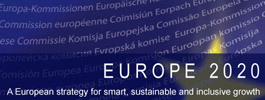By François Houÿez, EURORDIS Treatment Information and Access Director and Health Policy Advisor and Co-chair of the EUnetHTA Stakeholder Forum

European citizens want the best possible health care both now and in the future, and they hope that resources will be allocated according to need, in a fair way, no matter what the economic climate. The EU, more than any other part of the world, is thriving under the principle of solidarity.
The decision to provide financial coverage for a new health technology is not just an economic one: it is also a matter of ethics. The decision must be widely understood and enforceable. To this end, agencies that evaluate the societal benefit of these technologies agree on common methods and more and more often work together. EUnetHTA is the initiative that makes this possible.
We know the challenges we are facing:
- The need to forge a unified policy within a single European community encompassing countries of widely differing degrees of affluence and people with disparate ideas of health and health care. In accordance with the principle of solidarity , the right to benefit from medical treatment is guaranteed under the conditions established by national laws and practices;
- The efforts to create and share common methods for Health Technology Assessment (HTA), initiated some 25 years ago, require close European collaboration, and can only succeed if all Member States have the political will to continue building a strong political and social EU;
- Experience so far has pointed to the need to review administrative or legal provisions at the national level that prevent collaboration on joint work.
With this in mind, we can more clearly envision the future and set defined goals to help make it a brighter one for patients throughout Europe. If greater cooperation in HTA succeeds, HTA experts, regulators, clinicians and patients will be deciding together with technology developers how health technology should be evaluated and what criteria it should be based on. HTA agencies will collaborate more often, and all stakeholders will contribute to HTA, providing different viewpoints. HTA reports will be easily understood by everyone, from decision makers to healthcare professionals and patients. And HTA will be more transparent, following agreed-upon methods including the cost and economic evaluation. And with these goals met, perhaps our dreams will come true and the unacceptable disparities we now see in access to care in the EU will vanish.







